Whether you are churning out some high-speed miles with your local road cycling group, or you are taking a scenic tour with a few friends, the ability to quickly and efficiently communicate road hazards to other riders is a necessary and responsible habit to learn. Hand signals and vocal calls are the two best methods with which to pass information to your cycling companions. While many cyclists unfamiliar with pack riding tend to rely solely on vocal calls and shouting of non standard warnings, the responsible cyclist will use hand signals as the primary means of communication along with vocal calls as a secondary means when appropriate.
Hand signals
Many hand signals have slight variations but there are some basic signals that every cyclist should familiarize himself or herself with. Learning and using these hand signals can greatly enhance safety in a group of cyclists. Use these hand signals to point out objects in the group’s path of travel as well as to inform the other riders of your intentions.
Move to avoid object – This signal tells the riders behind you that they will need to move in the direction you are pointing because there is an object, either stationary or moving, that the group is approaching. Parked cars and slow moving pedestrians along the side of the road present a great opportunity to use this hand signal.
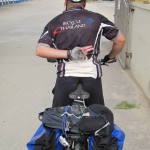
Hazard on the road or trail – This signal is used to identify a hazard on the actual road or trail surface that the group is riding on. Potholes, drainage grates, and manhole covers are great examples of when to use this signal. Make sure that you point at the hazard, as it appears ahead, allowing sufficient time for it to be avoided.
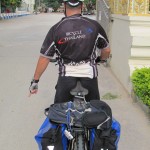
Loose road surface, sand, or glass – This signal alerts all riders that the group is approaching a scattered hazard that could cause traction problems. Rather than simply pointing at the hazard, like in the previous hand signal, you should make a waving action with the open palm of your hand facing the ground.
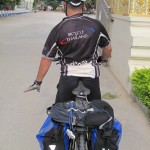
Pull through – Point your elbow out towards the side that you would like to have riders come forward. This signal tells the riders behind you that you are asking them to pass you on the side that you’ve indicated and to subsequently take up the lead position in front of you.
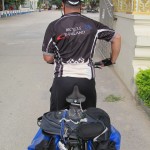
Stop – A clear indication to all riders that you have stopped pedaling and intend to bring your bicycle to a complete stop very soon. Never make an immediate stop, even after signaling, unless an emergency situation warrants it.
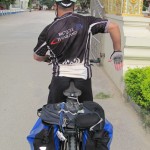
Turning – This signal makes clear your intentions to turn left or right. Some cyclists still indicate a right turn by extending their left arm and bending the forearm upwards at 90 degrees. This is incorrect and can be misunderstood to mean that you intend to stop your bicycle. The left arm bent at 90 degrees method was devised for motorists who are unable to reach out the right side window of their left-side drive vehicle to indicate a right turn.
Vocal calls
Vocal calls are quite useful, in addition to hand signals, to communicate in a pack of riders. Ambient noise from traffic or other sources may present problems with vocal calls along your route so stay aware of your conditions and use necessary precautions to ensure the safety of all riders. Here are a few of the basic vocal calls that you should become familiar with if you intend to ride in a group. If you are new to a group, pay attention to the calls they use and adapt accordingly.
Clear – When an intersection is safe to cross you can call out “Clear!” NEVER call out “No!” as this can easily be confused with the word “Go!”.
Slowing or Stopping – Yell “Stopping!” if you are going to be stopping your bicycle quickly. It is best to give the riders behind you an ample amount of warning before you stop. Announce that you are “Slowing!” as you roll up to a traffic light or stop sign. This gives the other riders plenty of time to prepare for your next call of “Stopping!”.
Car Back – Those riders at the back of the group shout this when there is a vehicle behind the group and it is attempting to pass. NEVER call out “Car!” as this can be confused with the word “Clear!”
Car Up – This is shouted by those riders at the head of the group when there is a vehicle in front of the group and the group intends to pass the vehicle because the vehicle is either slowing down or has indicated that it will turn out of the path of the cycling group. Once again, NEVER simply call out “Car!” as this can be confused with “Clear!”
Rolling – This vocal call is reserved for those riders who are comfortable enough to assess the ‘freshness’ of a yellow light. No group should ever bully their way through an intersection simply because the tail riders are unwilling to safely stop when the traffic light finally turned red. A vocal call of “Rolling!” is used to alert the riders behind you that you will be rolling through a yellow light because you’ve deemed it to be safe. Likewise, this call alerts those riders behind you that they need to make their own decision of whether to announce that they will also be “Rolling!” through or “Slowing!” and “Stopping!”. The key here is overall safety; reminding each rider to make responsible and safe decisions for themselves first while simultaneously keeping the rest of the group informed of the actions you intend to take.
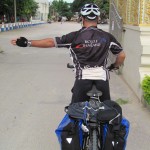
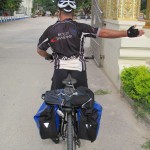
thank you. I M new to group rides. Only one so far. I knew the basics but found several here I didn’t even know existed. Will use and watch for them in the future. Oklahoma City is deadly.